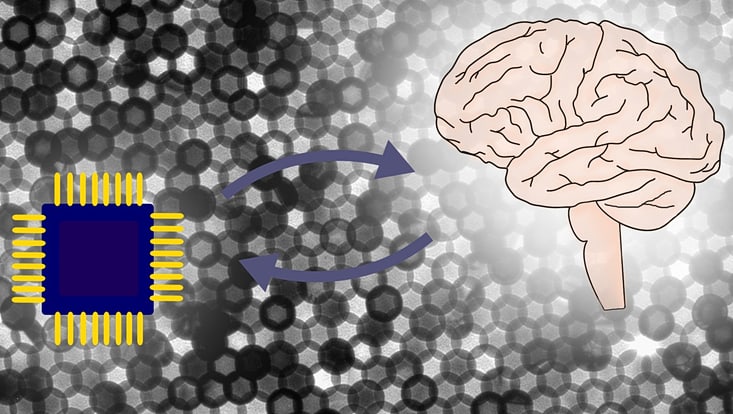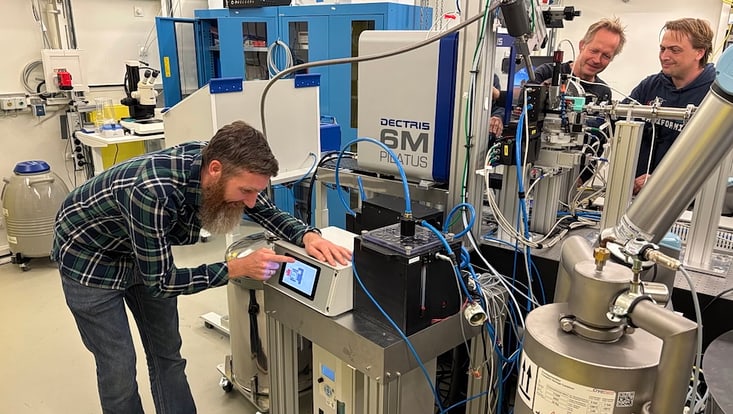Imaging of Matter
Interfacing with the Brain: The Potential of Nanotechnology
20 March 2025

Photo: UHH/Florian Schulz
What are the approaches to connecting the human brain to a machine? In a study published in the journal ACS Nano, an international team of researchers led by Prof. Wolfgang Parak from the Department of Physics at the University of Hamburg examines nanotechnology research approaches from a multidisciplinary perspective.
Interfacing artificial devices with the human brain is the central goal of neurotechnology. However, our imagination is often limited by the paradigms and technologies currently available. Proposals for brain-machine interfaces have changed over time, as has the technology available. Yet, our brains are so complex that until recently these visions have remained largely unattainable dreams. "The problem is that most of our technology is mechanical and electrical, whereas the brain is a living, dynamic entity," says Prof. Wolfgang Parak from the Institute for Nanostructure and Solid State Physics and a researcher in the Cluster of Excellence “CUI: Advanced Imaging of Matter”.
But now, nanotechnology may offer a new way forward: it includes engineered solid-state objects and integrated circuits and excels at small length scales of a few to a few hundred nanometers. As such, it matches the sizes of biomolecules, biomolecular assemblies and parts of cells. Therefore, the researchers see nanomaterials and nanotools as a way to interface with the brain in an alternative way.
Perspectives and limitations
In their study, the scientists – among them groups from CUI - review the existing literature on the use of nanotechnology in brain-machine interfaces and discuss perspectives and limitations, drawing on the expertise of a range of complementary disciplines, from neuroscience, engineering, physics and chemistry to biology and medicine, computer science and mathematics, and social sciences and law.
Specifically, they identify three main areas where nanotechnology can have an innovative impact. First, because of their high surface-to-volume ratio, nanomaterials are advantageous for forming intimate and close contacts between neurons and electrodes for electrical interfacing. Secondly, colloidal nanoparticles are excellent transducers for converting neuronal signals into other readouts and vice versa. Nanomaterials generally have larger interaction cross-sections with optical, magnetic and electrical signals than organic molecules. Nanomaterials are already well-developed as signal transducers. Third, nanotechnology is helping to develop model systems, such as brain-on-a-chip approaches.
Although it overlaps with other technologies, such as 3D printing, researchers expect nanotechnology will lead to significant advances. While not being able to emulate the brain completely, such test platforms will enable high-throughput screening approaches that would not be able to be carried out at the same scale in in vivo models. The technology could already contribute to improving medical treatments today.
Citation
Abdullah A. A. Ahmed, Nuria Alegret, Bethany Almeida et al.
Interfacing with the Brain: How Nanotechnology Can Contribute
ACS Nano 2025, XXXX, XXX, XXX-XXX


